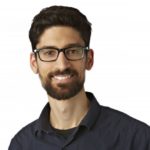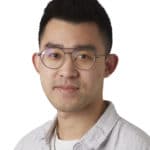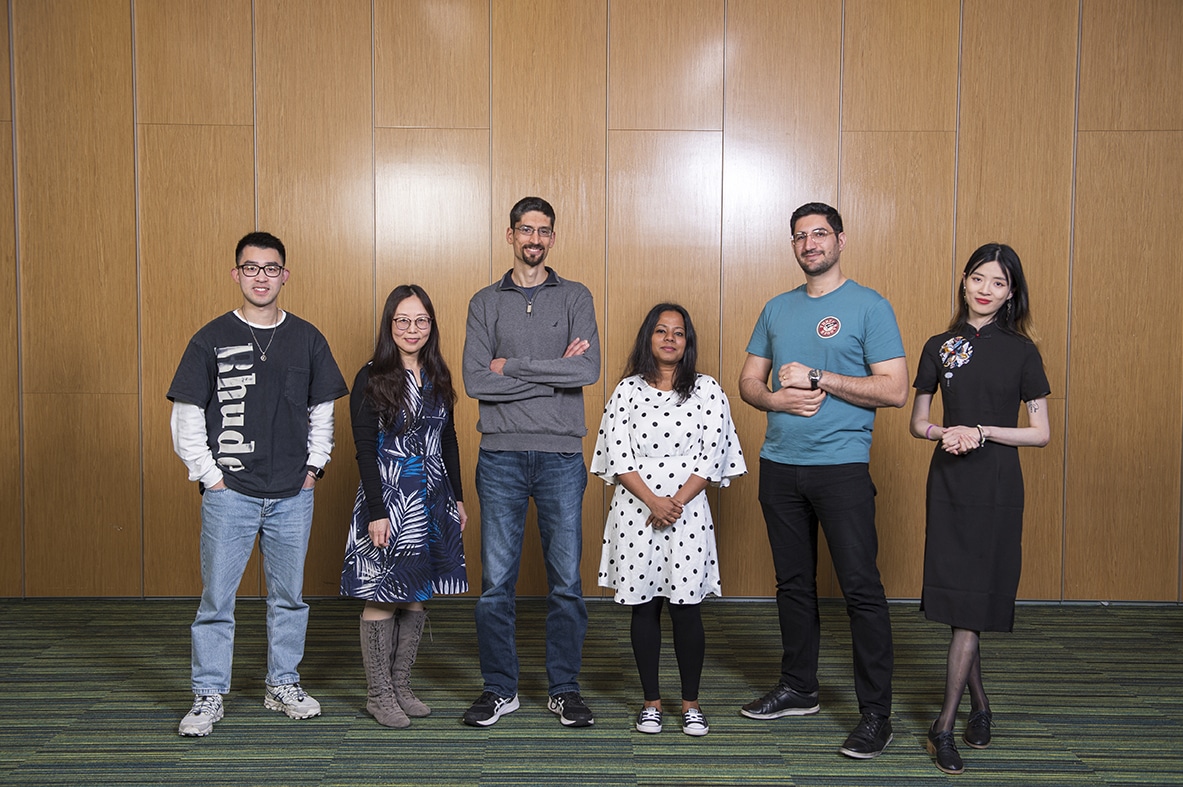The aim of regenerative medicine is not only to recover the integrity of individual organs, but also to maintain the proportions with the rest of the body. The Roselló-Díez group uses animal models to study the local and systemic mechanisms that orchestrate organ growth and repair in vertebrates. The ultimate goal is to lay the groundwork for regenerative therapies aimed at boosting these mechanisms.
Research
The Roselló-Díez group studies the signals that operate within the bones and between them and other tissues/organs during development and regeneration. At the local level, they study phenomena such as compensatory proliferation in response to biochemical and mechanical changes in the cell vicinity. At the systemic level, they are exploring the role of the vascular and nervous systems in the bidirectional communication between the bones and the rest of the body.
Open positions for Students
Honours/Masters student
Project: Establishing new models of genetic chimeras to study limb growth regulation
Classic transplantation studies have shown remarkable autonomy of limb growth, such that when limb primordia are grafted from a big salamander species into a related species of smaller size (or the other way around), the grafted limb grows to the size of the donor, not the host. However, internal organs such as the pancreas show the opposite behaviour, adapting to the size of the host when generated in situ via pluripotent stem cells. To determine whether this discrepancy depends on where the organ progenitors are generated (donor vs. host), we plan to generate a model of inter-species chimeras in mice, in which the limbs are generated from pluripotent stem cells injected into mouse embryos that cannot generate limbs. This project will be the proof-of-principle to establish such a technique.
Main techniques: Mouse timed mating and embryo collection, generation and culture of induced pluripotent stem cells, blastocyst complementation
Supervisors: Dr Alberto Roselló-Díez
Project: Characterising a highly reparative but transient cartilage progenitor in perinatal mice
Long bones grow by forming a cartilage template that provides a scaffold to be replaced by mineralised bone. We have recently identified a cartilage progenitor population that gets extinguished around birth during normal mouse growth, but that expands and lingers for a longer time in response to cartilage injury. We plan to characterise these progenitors in several models of injury, using single-cell RNA-seq, as well as their requirement during catch-up growth (recovery of the normal growth trajectory after a transient developmental perturbation).
Main techniques: Mouse timed mating and embryo collection, PCR genotyping, flow cytometry, single-cell preparation
Supervisors: Dr Chee Ho H’ng, Dr Jonathan Bensley
Contact Alberto Roselló-Díez at alberto.rosellodiez@monash.edu for more information.
Group Members





Research Themes
- Characterising the local cell-autonomous and nonautonomous responses to an injury, including the production and role of alarm signal(s) and the response of stem/progenitor cells
- Dissecting the inter-organ communication mechanisms that lead to systemic growth effects upon local injury, with a focus on the role of the vascular and nervous systems
- Exploring the impact of the discovered injury response pathways on the buffering of developmental noise (random perturbations during normal development)
- Exploiting the discovered injury response pathways for the treatment of animal models of dwarfism and fracture repair
For more information, visit www.rosellodiezlab.com.
Featured Publications
| Authors | Title | Published In |
|---|---|---|
Ahmadzadeh E, Bayin NS, Qu X, Singh A, Madisen L, Stephen D, Zeng H, Joyner AL, Rosello-Diez A. |
A collection of genetic mouse lines and related tools for inducible and reversible intersectional misexpression. |
Development. 2020 May 28;147(10):dev186650. doi: 10.1242/dev.186650. PMID: 32366677. |
Roselló-Díez A, Madisen L, Bastide S, Zeng H, Joyner AL. |
Cell-nonautonomous local and systemic responses to cell arrest enable long-bone catch-up growth in developing mice. |
PLoS Biol. 2018 Jun 26;16(6):e2005086. doi: 10.1371/journal.pbio.2005086. eCollection 2018 Jun. |
Roselló-Díez A, Stephen D, Joyner AL. |
Altered paracrine signaling from the injured knee joint impairs postnatal long bone growth. |
Elife. 2017 Jul 25;6. pii: e27210. doi: 10.7554/eLife.27210.z |
Zheng HF*, Forgetta V*, Hsu YH*, Estrada K*, Roselló-Díez A*, Leo PJ*, Dahia CL*, Park-Min KH*, Tobias JH*, Kooperberg C* et al. (*equal contribution) |
Whole-genome sequencing identifies EN1 as a determinant of bone density and fracture. |
Nature. 2015 Oct 1;526(7571):112-7. doi: 10.1038/nature14878. Epub 2015 Sep 14. |
Roselló-Díez A, Arques CG, Delgado I, Giovinazzo G, Torres M. |
Diffusible signals and epigenetic timing cooperate in late proximo-distal limb patterning. |
Development. 2014 Apr;141(7):1534-43. doi: 10.1242/dev.106831. Epub 2014 Mar 5. |
Roselló-Díez A, Ros MA, Torres M |
Diffusible signals, not autonomous mechanisms, determine the main proximodistal limb subdivision. |
Science. 2011 May 27;332(6033):1086-8. doi: 10.1126/science.1199489. |
More Publications
| Authors | Title | Published In |
|---|---|---|
Kagan BJ, Rosello-Diez A. |
Integrating levels of bone growth control: From stem cells to body proportions. |
Wiley Interdiscip Rev Dev Biol. 2020 May 20:e384. doi: 10.1002/wdev.384. Online ahead of print. PMID: 32436370. |
Delgado I, Lopez-Delgado AC, Rosello-Diez A, Giovinazzo G, Cadenas V, Fernandez-de-Manuel L, Sanchez-Cabo F, Anderson M, Lewandoski M, Torres M. |
Proximo-distal positional information encoded by an Fgf-regulated gradient of homeodomain transcription factors in the vertebrate limb |
Science Advances. 2020 Jun 3;6(23). doi: 10.1126/sciadv.aaz0742. PMID: 32537491. |
Rosello-Diez A, Whited JL.
|
Discussing limb development and regeneration in Barcelona: The future is at hand. |
Dev Dyn. 2020 Feb;249(2):160-163. doi: 10.1002/dvdy.121. Epub 2019 Nov 12. Review. |
Uribe V, Rosello-Diez A. |
Culturing and Measuring Fetal and Newborn Murine Long Bones. |
J Vis Exp. 2019 Apr 26;(146). doi: 10.3791/59509. |
Willett RT, Bayin NS, Lee AS, Krishnamurthy A, Wojcinski A, Lao Z, Stephen D, Rosello-Diez A, Dauber-Decker KL, Orvis GD, Wu Z, Tessier-Lavigne M, Joyner AL. |
Cerebellar nuclei excitatory neurons regulate developmental scaling of presynaptic Purkinje cell number and organ growth.
|
Elife. 2019 Nov 19;8. pii: e50617. doi: 10.7554/eLife.50617. |
Legué E, Gottshall JL, Jaumouillé E, Roselló-Díez A, Shi W, Barraza LH, Washington S, Grant RL, Joyner AL. |
Differential timing of granule cell production during cerebellum development underlies generation of the foliation pattern.
|
Neural Dev. 2016 Sep 8;11(1):17. doi: 10.1186/s13064-016-0072-z. |
Roselló-Díez A, Joyner AL. |
Regulation of Long Bone Growth in Vertebrates; It Is Time to Catch Up. |
Endocr Rev. 2015 Dec;36(6):646-80. doi: 10.1210/er.2015-1048. Epub 2015 Oct 20. Review. |
González-Lázaro M, Roselló-Díez A, Delgado I, Carramolino L, Sanguino MA, Giovinazzo G, Torres M. |
Two new targeted alleles for the comprehensive analysis of Meis1 functions in the mouse. |
Genesis. 2014 Dec;52(12):967-75. doi: 10.1002/dvg.22833. Epub 2014 Nov 11. |
Roselló-Díez A, Torres M. |
Regulative patterning in limb bud transplants is induced by distalizing activity of apical ectodermal ridge signals on host limb cells. |
Dev Dyn. 2011 May;240(5):1203-11. doi: 10.1002/dvdy.22635. |




